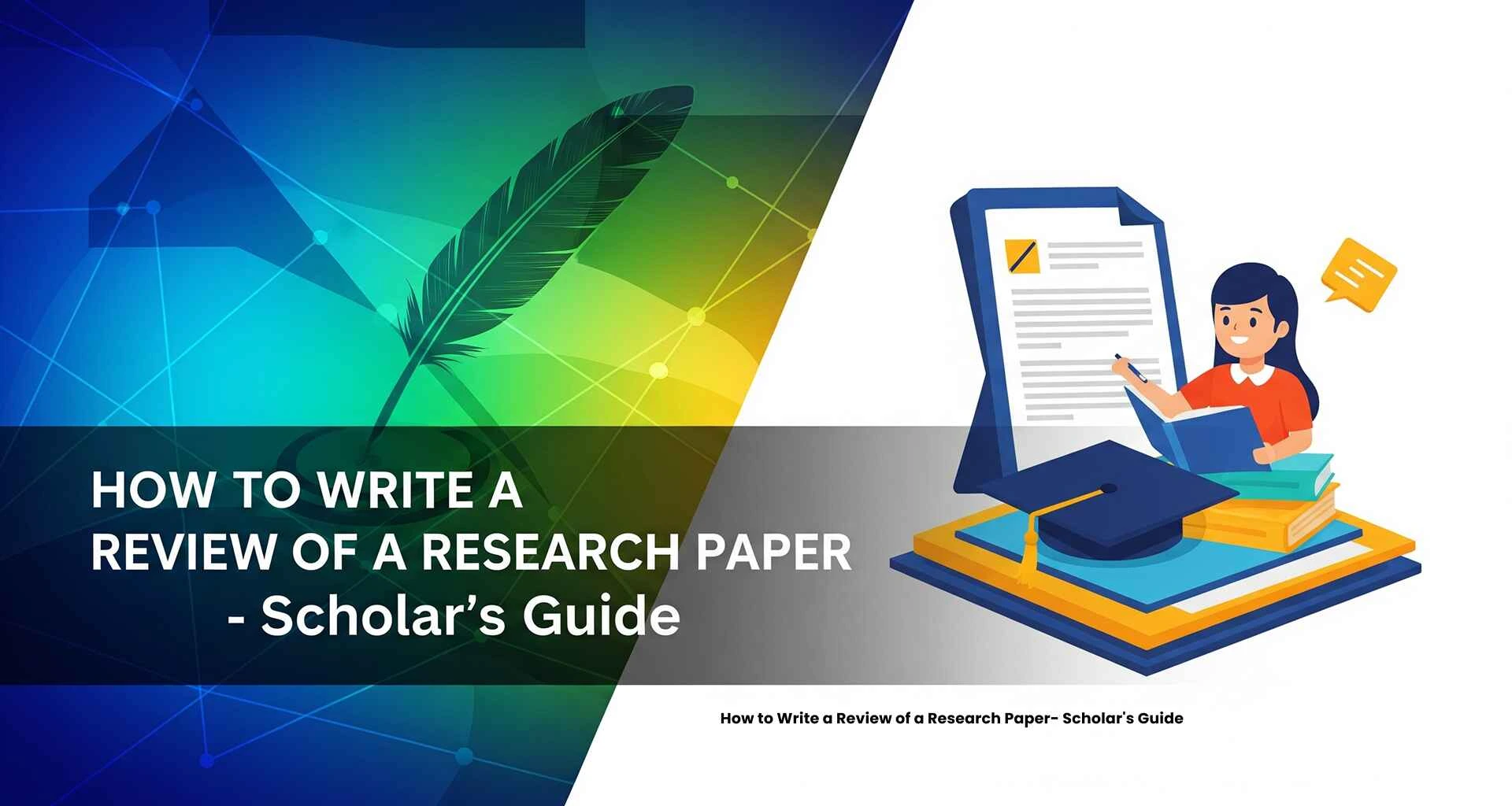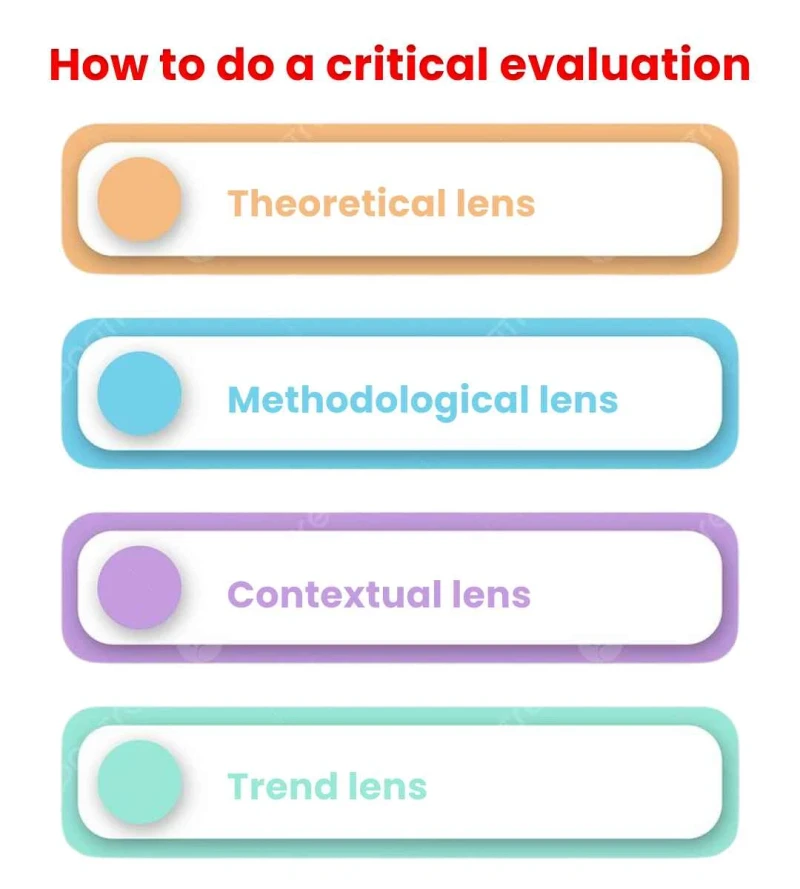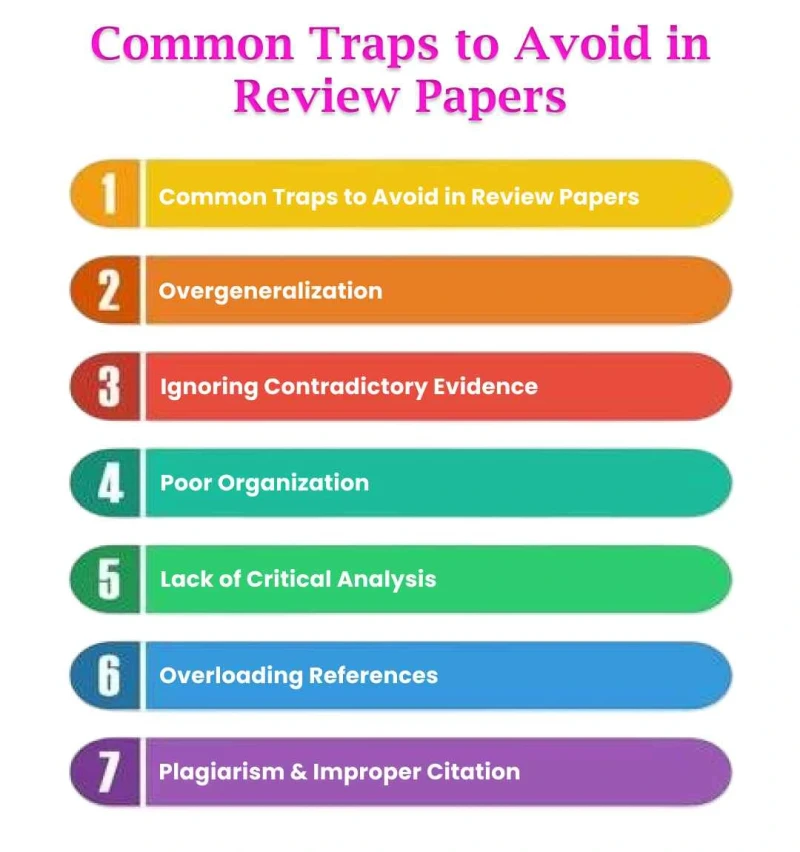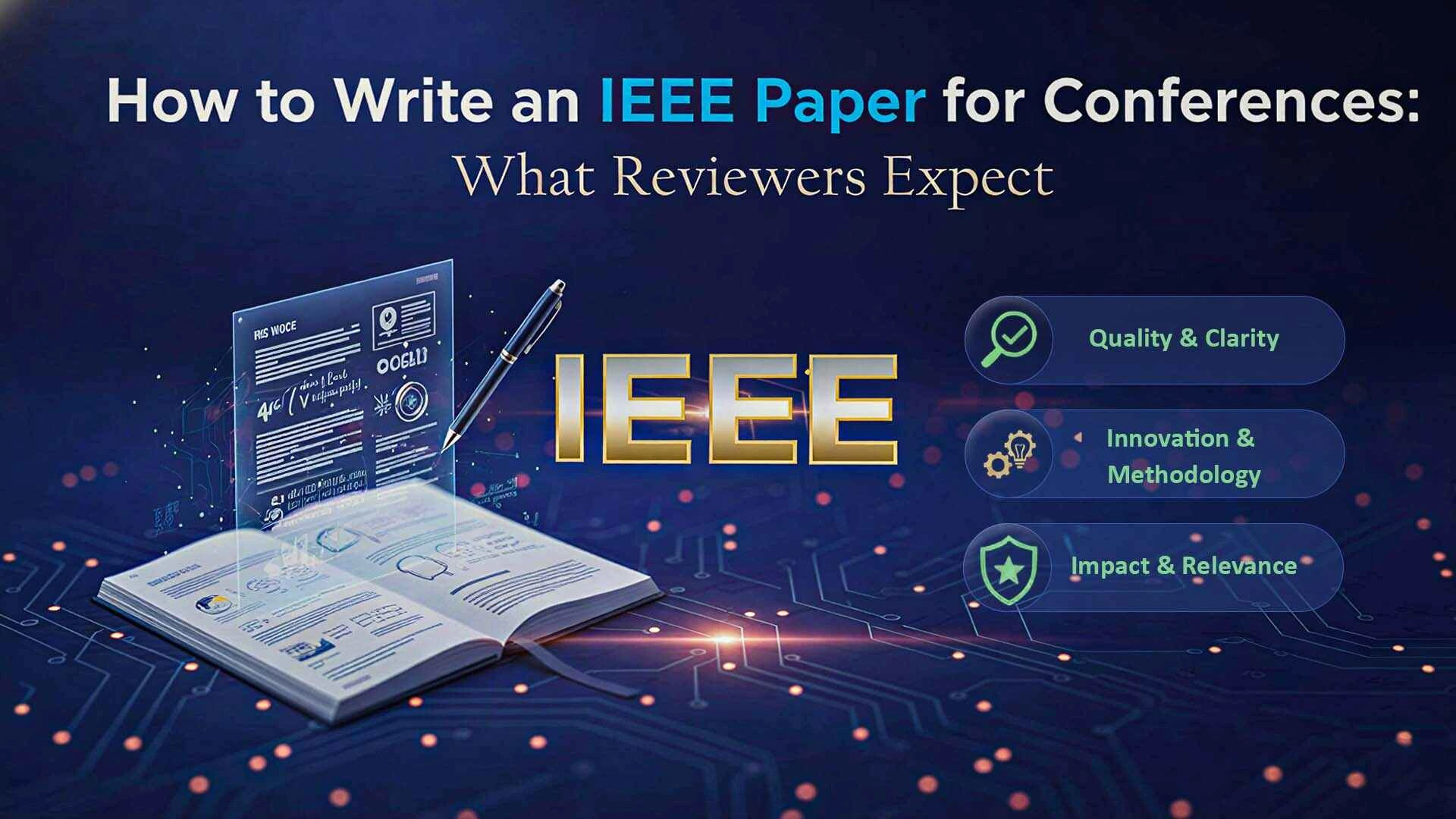
Esther F
How to write a review of a research paper is a skill that every scholar must master, because review articles are the ones which play a vital role in advancing academic knowledge.
Unlike original research articles, which present new findings, existing review papers, on the other hand, critically synthesise existing scholarship, providing clarity on what is known, where gaps remain and how theories can evolve.
The essentials like literature mapping, theory building and publication visibility are enhanced by existing review papers. These are highly valued, shaping the future research directions. This blog outlines a structured, professional approach to developing a review research paper which adds meaningful scholarly value
The review of the literature in the research plays a central role in clarifying the major academic goals. These academic goals shape the future research studies and help to build up strong research papers. The strong literature review consolidates existing knowledge, identifies critical gaps and highlights opportunities for advancing scholarly understanding.
On the other hand, scope setting is the process which defines the boundaries of the review. Scholars may choose either a thematic scope or a methodological scope.
A thematic scope focuses on concepts and debates which occur across disciplines, whereas a methodological scope speaks to comparing research designs, tools and analytical approaches.
Selecting the right scope ensures that the review remains coherent, purposeful and academically relevant.
What is the central problem or research question driving the review?
Should the focus be thematic, methodological, or a combination of both?
What time frame, disciplines, or sources will be included or excluded?
How will the inclusion criteria be justified?
Clearly defining both purpose and scope provides direction for the review, guiding its structure, depth, and scholarly impact. This factor makes sure that the paper not only organises existing literature but also adds measurable value to academic discourse.
In academic reviews, the standard of writing is measured by the knowledge conveyed and also by how it is articulated. Scholars are expected to write with clarity, ensuring that arguments are accessible with objectivity, avoiding personal bias, with critical depth, engaging with literature in a way that evaluates, compares and synthesises existing findings.
Another cornerstone of strong scholarly writing is responsible citation practice. Properly crediting sources and avoiding plagiarism safeguards academic integrity.
Excessive description without analytical contribution
Over-reliance on a narrow range of sources
Neglecting to use consistent referencing formats
Writing that is overly complex or inaccessible
When executed well, scholarly writing elevates the review paper’s credibility, impact, and readability, allowing it to stand as a reliable resource within the academic community.
Choosing the right approach is very important in determining the quality and relevance of the review. Common methods include narrative reviews, which provide descriptive overviews; systematic reviews, which follow a strict protocol; meta-analysis, using statistical synthesis; and scoping reviews, which map broad areas of literature. Each approach offers different strengths based on research questions.
What type of data is being examined?
Are there journal or disciplinary requirements?
What tools or methodological skills are available?
Choosing the right methodology ensures that the review aligns with the scholar’s research goals and disciplinary standards.
Writing a strong review paper requires a clear sequence of actions. The process begins with planning, where the purpose and scope are defined. Next is literature searching, using databases like Scopus, Web of Science, or Google Scholar. Screening follows, applying inclusion and exclusion criteria to ensure relevance.
Once the sources are finalised, the organisation stage involves categorising studies thematically or methodologically. Then analyse the review paper, which requires critical evaluation and synthesis of findings, identifying patterns and research gaps.
Then scholars move to the drafting part, where arguments are structured logically and finally step into revision, refining clarity, accuracy and coherence.
Planning: Concept maps, research question frameworks.
Searching: Database filters, Boolean operators, reference managers (Zotero, EndNote)
Screening: PRISMA flow diagrams, inclusion/ exclusion checklists
Organisation: Thematic coding tools, spreadsheets
Analysis: Qualitative software (NVivo), statistical packages for meta-analysis
Drafting & Revision: Word processors, grammar checkers and peer feedback.
By following this roadmap, scholars can approach the review writing process systematically, producing work that is both valuable and impactful.
A well-structured review paper, guides the reader through a clear and logical flow of information. The introduction part sets the context of the topics and outlines the objectives of the topics.
The body synthesises and analyses the existing research organised in forms such as thematically or methodologically. The discussion part interprets findings as well as highlights the gaps which connect the insights to broader academic debates.
Finally, the conclusion part speaks about the key takeaways, which emphasise implications and suggest direction for future research.
Introduce the research topic and justify its importance of the research.
Present a clear synthesis of the literature in the body.
Analyse trends, gaps, and contradictions in the discussion.
Draw concise conclusions and suggest future research directions.
Maintain logical flow and coherent transitions throughout the research.
By following this structure of formatting, scholars can ensure that their review paper is well-organised and precise, which adds meaningful value to the academic community.

The ideal review paper is not an exercise in summarising others' work—it's seeing the bigger picture. Critical evaluation entails finding patterns, weighing strengths and limitations, and bridging understanding between research to uncover gaps or directions for new research. Through such an approach, your review becomes a valuable contribution rather than a summary.
Theoretical lens: Think about how studies validate, build on, or challenge existing theory.
Methodological lens: Compare alternative research designs, data sources, and methods to determine what works best.
Contextual lens: Consider whether findings are generalizable across different settings, groups, or time periods.
Trend lens: Recognise new trends, contradictions, or gaps that need research.
Through the help of these lenses, researchers can critically read literature, identify points for fresh research, and write a review that actually participates in the scholarly conversation.
The perfect review paper is a blend of formal style and factual, objective language. Scholars are required to emphasise paraphrasing sources to the word and avoid sentence copying, acknowledging ideas properly. Ethical writing in earnest research, such as transparency, honesty, and respect for intellectual property, is involved. These measures are followed by adhering to which not only makes it more credible but also expresses integrity in scholarship.
Be unbiased and objective.
Paraphrase and summarise sources appropriately.
Cite all references using consistent and correct referencing.
Avoid every form of plagiarism.
Be transparent when reporting and applying methodology.
Sticking to such protocols ensures professional writing is enforced and held responsible, and sound research is encouraged.

Even seasoned scholars are prone to common traps that diminish the quality of a review paper. Awareness of such common traps guarantees coherence, clarity, and academic value.
Excessive focus on summarisation and less on critical analysis.
Unaddressed gaps or future research.
Leaving out valuable or current literature.
Inconsistent or incomplete citations are shown.
Use charged or biased language.
Remain poorly organised and lacking logical order.
Being aware of these hazards, reviewers can improve their reviews, be perceptive, authoritative, and productive in their field.
Your review publication preparation includes rigorous coordination with the target journal. Being informed about journal scope, respecting style guidelines, and projecting expectations from peer review improve your acceptance chances.
Consider your paper's alignment with the thematic concern of the journal and readership
Adhere to submission and formatting guidelines as a standard procedure
Emphasise novelty and intellectual contribution in the discussion and abstract
Check for language, citation, and figure errors carefully
Make anticipatory feedback responses to reviewers' comments
Through these steps, researchers are able to present their work in a professional manner such that they will be able to present their research effectively, thus improving opportunities for successful publication and greater scholarly exposure.
Professional PhD assistance can shorten the review-writing process and make it more efficient. Professionals can provide literature review assistance, consistency and clarity editing, and peer-reviewed journal submission preparation so that your manuscript is in the best scholarly shape. Scholars can improve workflow efficiency, overall quality, and publication success probability without undermining academic integrity by utilising these services.
Better-than-summaries, better review articles are greater than the sum of their parts. Through the critical synthesis of literature, recording gaps, and proposing avenues for further research, scholars are making a contribution to the academic discourse. Publishing well-thought-out, well-organised reviews reiterates the groundwork for further study and supports the scholar's contribution to moving knowledge forward.

Machine Learning Research Paper: How to Design, Write, and Publish Cutting-Edge ML Research

How to Write an IEEE Paper for Conferences: What Reviewers Expect

Importance of Literature Review in Research – Complete Guide for Scholars

How to Write a Synopsis for a Thesis: A Complete Writing Framework

Top 5 Best Literature Review Writing Service for PhD Scholars